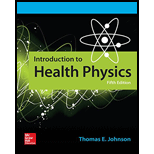
Concept explainers
(a)
The duty cycle of the radar.
(a)
Answer to Problem 14.28P
The duty cycle of the radar is found to be
Explanation of Solution
Given:
Pulse width
Formula used:
The duty cycle is calculated using the expression,
Calculation:
The ON time is calculated as follows:
Express the pulse width in seconds.
Substitute the given values in the equation and calculate the ON time.
Calculate the duty cycle, using the given values in the formula.
Conclusion:
Thus, the duty cycle of the radar is found to be
(b)
The average power of the radar.
(b)
Answer to Problem 14.28P
The average power of the Radar is found to be 2000 W.
Explanation of Solution
Given:
Peak power
Duty cycle
Formula used:
The average power is given by the expression,
Calculation:
Express the peak power
Substitute the given values in the formula and calculate the average power.
Conclusion:
The average power radiated by the radar is 2000 W.
(c)
The power density at 100 m.
(c)
Answer to Problem 14.28P
The power density at a distance of 100 m is found to be 26 mW/cm2.
Explanation of Solution
Given:
The frequency of
Speed of light
Diameter of the dish
Average power
Distance of the point from the antenna
Formula used:
If the distance of the point is nearly 4 times the diameter of the dish, then the point is in the far field. The power density
Here, A is the area of the antenna aperture and
The wavelength of the radiation is determined using the expression,
Calculation:
Express the frequency in Hz.
Determine the wavelength of the radiation by substituting the values of variables in equation (2).
Express the radius R in cm.
Express the power in mW.
Substitute the values of variables in equation (1) and calculate the power density.
Conclusion:
Thus, the power density at a distance of 100 m is found to be 26 mW/cm2.
(d)
If a person standing in the field of the Radar at a distance of 100 m from it for an hour is within the permissible limits of exposure according to OSHA standards.
(d)
Answer to Problem 14.28P
The person standing in the field of the Radar at a distance of 100 m from it for an hour is within the permissible limits of exposure according to OSHA standards.
Explanation of Solution
Given:
The frequency of radiation
Beam width
Rotational frequency
Power density at a distance 100 m
Permissible exposure limit by OSHA standards: 10 mW/cm2averaged over 6 min.
Calculation:
Determine the time period of rotation using the expression,
Substitute the given value of n.
For every rotation, the time of exposure t is given by,
Substitute the given values in the expression.
The number of rotations made in 1 h is given by
Total exposure time is given by,
Substitute the given values in the expression.
According to OSHA standards, the permissible level of exposure is 10 mW/cm2averaged over 6 min. This means that the allowed energy density levels are,
The energy density the person is exposed in 1 h is given by,
Substitute the given values in the expression.
Conclusion:
Thus, the person standing in the field of the Radar at a distance of 100 m from it for an hour is within the permissible limits of exposure according to OSHA standards.
Want to see more full solutions like this?
Chapter 14 Solutions
Introduction To Health Physics
- An x - ray tube used for cancer therapy operates at4.0 MV, with a beam current of 25 mA striking the metal target.Nearly all the power in the beam is transferred to a streamof water flowing through holes drilled in the target. What rateof flow, in kilograms per second, is needed if the rise in temperature(ΔT ) of the water is not to exceed 50.°C?arrow_forwardHow would you go about improving the determination of the electrical resistance of a given material in resistor color coding activity?arrow_forwardCalculate the conduction velocity if the electrodes are 12cm and there are 0.3sec between the time of stimulation and the peak of the CAP.arrow_forward
- A Van de Graaff generator produces a 2 MeV beam of deuterons, which are heavy hydrogen nuclei containing one proton and one neutron.If the electric current of the beam is 10 μA, find the separation distance between the deuterons?arrow_forwardCalculate the percentage efficiency of a solar PV module whose length is 136 cm and width is 106 cm and produces 233 W maximum power when exposed to 1115 W/m2 solar irradiance?arrow_forward(Indicates a review question, which means it requires only a basic understanding of the material to answer. Questions without this designation typically require integrating or extending the concepts presented thus far.) . Saltwater contains an equal number of positive and negative ions. When saltwater is flowing through a pipe, does it constitute an electric current?arrow_forward
- A person with skin area 2 m2 and 0.97 radiation efficiency is at rest and has a skin temperature of 28oC in an environment with a uniform temperature of 22o C. Calculate the heat loss rate if the skin temperature is raised by 8o C by vigorous exercise.arrow_forwardPacemakers designed for long-termuse commonly employ a lithium-iodine battery capable of supplying 0.42 A # h of charge. (a) How many coulombs of chargecan such a battery supply? (b) If the average current producedby the pacemaker is 5.6 mA, what is the expected lifetime of thedevice?arrow_forward

